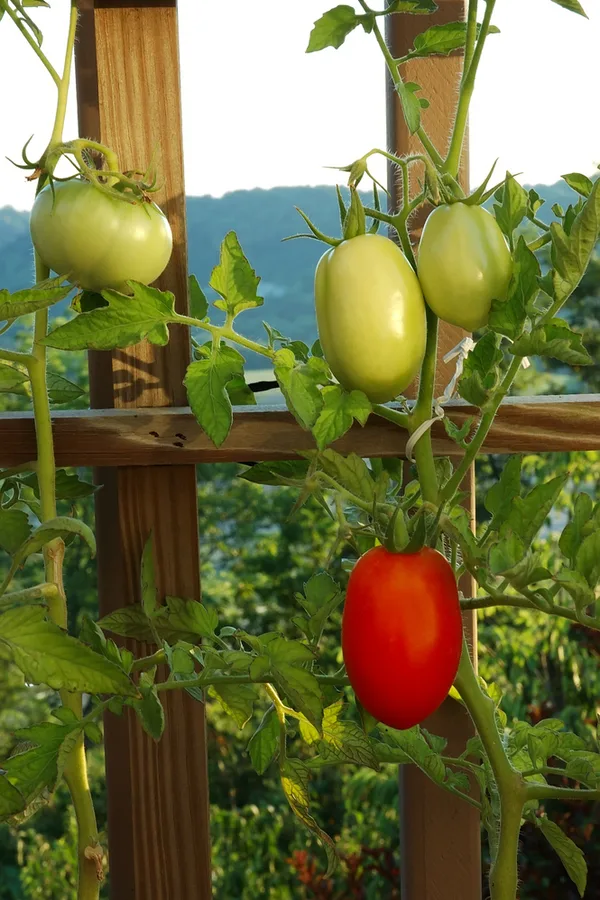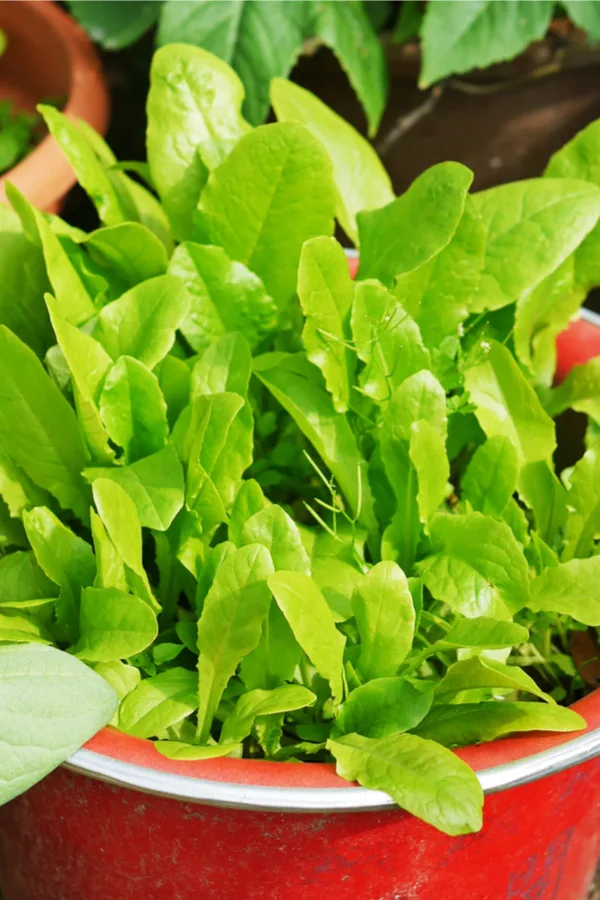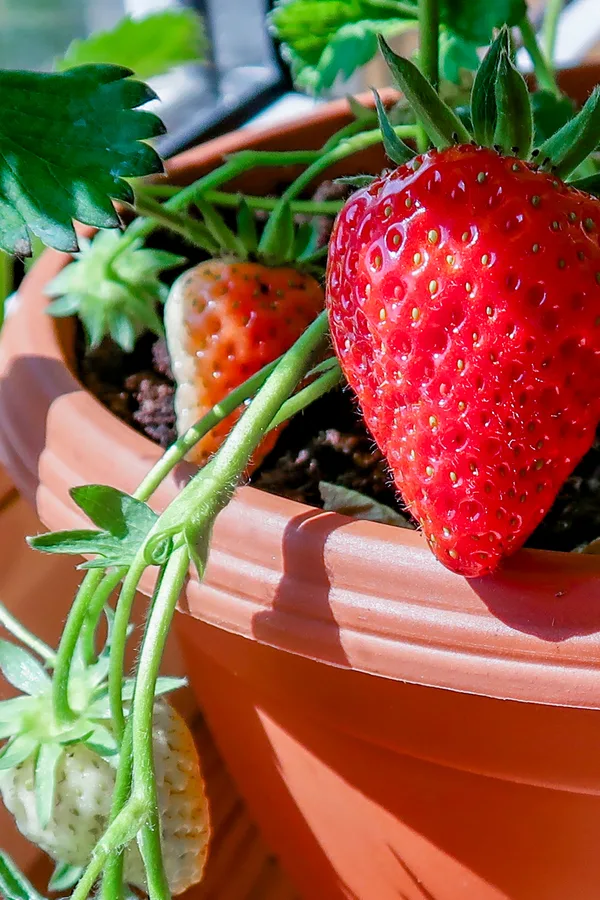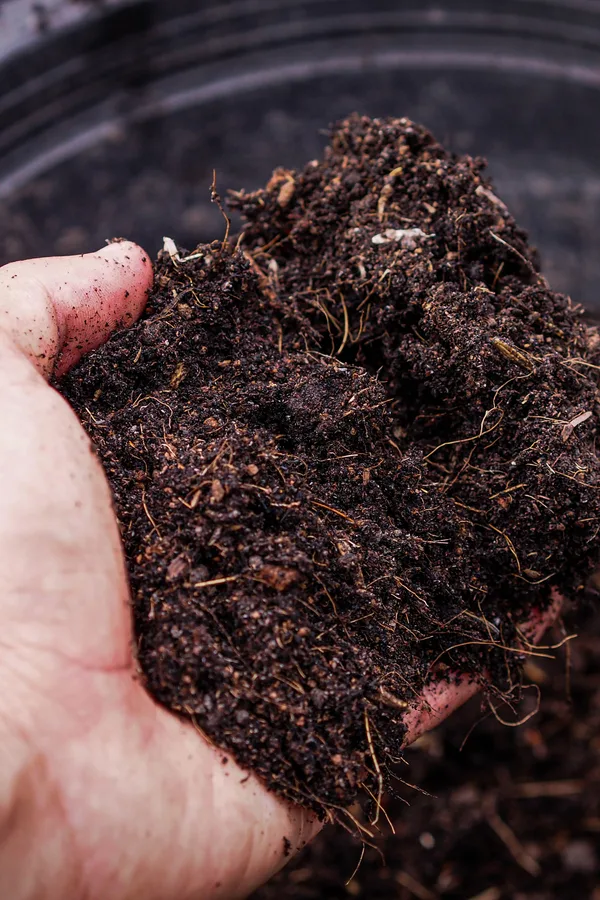You might just be surprised how easy it can be to grow an entire vegetable garden in containers – no matter where you live!
You don’t need a large backyard or a big garden to grow fresh food. In fact, as long as you have a porch, patio or deck that gets a dose of daily sunshine, you can grow nearly all of your favorite vegetables.
The Benefits Of Growing In Containers
Gardening in containers has many additional benefits besides simply growing in smaller spaces. It also happens to an excellent method to still enjoy gardening for those who might struggle with the physical demands of a traditional garden space.
And, with less weeds and easier access, container gardening is also a wonderful choice for those who are limited on time. After all, containers can be planted quickly. And in most cases, require just mere minutes a day to water and maintain.

But if all that wasn’t enough, growing a few vegetables in pots and containers on your patio gives you easy and fast access to fresh food.
Many gardeners with large backyard gardens still grow vegetables on their patio and decks in containers. Why? To simply have them close by when needed. Not only do they provide instant food, but add a bit of color and greenery to the space as well.
So, just how easy is it to grow vegetables in containers? Actually, success really boils down to following 5 simple, but key tips. With that in mind, here are the 5 big secrets to success when growing vegetables in containers:
The 5 Keys To Growing Vegetables In Containers
#1 Selecting The Right Plants To Grow – How To Grow Vegetables In Containers
Success with container growing all begins by choosing the right plants to grow. With limited soil space, it’s important to select vegetable plants and varieties that have more compact growth patterns. In addition, plants that can be easily trellised or supported work well too.

Of course, it all depends on size and shape of the container (Tip #2) you will be growing in, but as a rule, smaller plant varieties will perform better in pots.
Case in point, tomatoes. By selecting small to medium tomato plant varieties such as San Marzanno, Roma, or cherry style tomato plants, there is enough soil and space to grow with ease.
The same would not be true for large heirlooms like Brandwine or Purple Cherokee. Heirlooms such as these can grow 5 to 8 feet tall. And unfortunately, need a lot of soil and support to do so.
The same advice continues for peppers, cucumbers, zucchini and other vegetables. Select smaller, bush style varieties with compact growth for best success.
#2 Selecting The Right Container – How To Grow Vegetables In Containers
What you grow in is as important as the plants you choose to grow. Avoid containers with shallow soil reserves. They simply do not provide enough room for adequate root growing.
Small, shallow pots will require multiple daily watering chores, and creates plants that never full develop from shallow roots.

It all again depends on what you will be planting. For growing lettuce and small greens, look for pots and containers at least 6″ to 8″ deep.
Salad and herb crops are among the easiest to grow in pots. They don’t need a lot of depth in the soil, so you can select smaller containers and grow a wide selection of varieties. Just remember to keep harvesting and stagger your plantings in new containers to keep the fresh greens coming all summer long!
When it comes to growing some of the larger vegetables such as tomatoes, peppers and cucumbers, the bigger the container the better. Select pots and containers that have a minimum of 12 inches of depth and 10″ wide for larger plants.
5 gallon buckets and nursery buckets are a great choice for bigger plants, and can be quite economical too. They can also easily be dressed up on patios and porches with a homemade decorative cover or planter box.
#3 Provide Good Drainage – How To Grow Vegetables In Containers
Now that you have the right plants and the right size container, it’s all about providing good drainage. In fact, having proper drainage in your containers is one of the biggest keys to success of all.
If the plants can’t shed excess water, they will simply not perform well. Whatever you choose as your container, make sure it has plenty of drainage holes in place.

If not, create your own. Use a 1/2″ or 3/4 drill bit to make four to five holes in the bottom of containers. Next, place a bit of gravel, mulch, or bark mulch in the bottom to help keep the holes free.
Pine bark nuggets are one of the best choices for bottom drainage, and can be used for multiple years. They keep the soil from compacting the drainage holes, and keep the buckets lighter than using rocks.
#4 Provide Great Potting Soil For Your Plants – How To Grow Vegetables In Containers
Whatever you do, plant with good soil! Plants in containers simply will not grow well in regular garden soil or top soil. There are just not enough nutrients in regular soil to provide the power vegetable plants need to produce.
Start with a good quality potting mix, or create your own from an equal mix of sand, pulverized topsoil, compost and perlite. See : Homemade Potting Soil Recipe

Adding worm castings to the mix is a great idea as well. It provides a perfect slow-release fertilizer that helps to power plants as they grow.
As a final note, when it comes to container growing, you will need to provide a little natural fertilizer every few weeks. For this, compost tea or worm casting tea every few weeks works wonders for plants growth and production.
#5 Proper Watering – How To Grow Vegetables In Containers
Last but not least, total success comes down to watering your container plants on a consistent basis.
Container plants tend to dry out much faster than traditional vegetable plants in a garden. The sun and wind can quickly steal away moisture, leaving plants thirsty for a drink.
The key is to be consistent. When plants are allowed to dry out too often and for long periods, the resulting stress can limit bloom and vegetable production. It can also leave the plant more susceptible to disease and pest issues.

But at the same time, it’s also important not to over-water. The key is to get on a regular schedule to check your plants for watering. Most vegetable plants will need to be watered daily, some even twice daily as they grow larger late in the season.
To check, place your index finger down about 1″ into the pot. If it comes back dry, it’s time to water. If there is moisture or dirt is sticking to your skin, then let it be.
Here is to growing in pots and containers this year with smashing success!
Follow Our Facebook Page For Great Gardening Tips And Advice! This Is My Garden Facebook Page
This Is My Garden is a garden website created by gardeners, for gardeners. Jim and Mary Competti have been writing gardening, DIY and recipe articles and books and speaking for over 15 years from their 46 acre Ohio farm. They publish three articles every week, 52 weeks a year. Sign up today to follow via email, or follow along!
